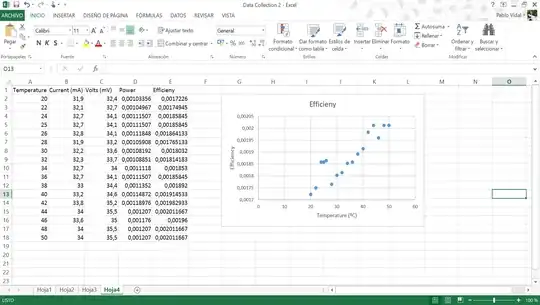I have recently performed an experiment in which I placed a solar panel inside a closed box, together with a heater and a lamp (60W). I increased the temperature using a heater from 20ºC to 50ºC. The lamp remained switched on the whole time.
I´ve read on the internet that the optimum temperature at which solar panels work is 25ºC. After that, the efficiency starts to decrease. Nonetheless, my data shows the opposite. The higher the temperature, the more efficiency it has. I don´t understand how this is possible. The current is supposed to increase, and the voltage to decrease, but in my data both of them increase linearly.  I don´t know if it´s because I have a small solar panel, which has different purposes, or if there´s a systematic error. I used a milliammeter and a millivoltmeter.
If anyone could help, or explain why this happens I would really appreciate it.
Thank you!
I don´t know if it´s because I have a small solar panel, which has different purposes, or if there´s a systematic error. I used a milliammeter and a millivoltmeter.
If anyone could help, or explain why this happens I would really appreciate it.
Thank you!